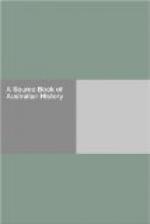When the sun was fully risen and the haze had disappeared, we could see that the Australians had actually established themselves on the top of the ridge, and were evidently trying to work their way northwards along it....
The fighting was so confused, and took place amongst such broken ground that it is extremely difficult to follow exactly what did happen throughout the morning and afternoon of April the 25th. The role assigned to the covering force was splendidly carried out up to a certain point, and a firm footing was obtained on the crest of the ridge which allowed the disembarkation of the remainder of the force to go on uninterruptedly except for the never-ceasing sniping.
But then the Australians, whose blood was up, instead of entrenching themselves and waiting developments, pushed northward and eastward inland, in search of fresh enemies to tackle with the bayonet. The ground is so broken and ill-defined that it was very difficult to select a position to entrench, especially as after the troops imagined they had cleared a section, they were continually being sniped from all sides. Therefore they preferred to continue the advance.... The Turks only had a comparatively weak force actually holding the beach, and they seemed to have relied on the difficult nature of the ground, and their scattered snipers, to delay the advance until they could bring up reinforcements from the interior.
Some of the Australians who had pushed inland were counter-attacked and almost outflanked by these oncoming reserves, and had to fall back after suffering very heavy casualties.
It was then the turn of the Turks to counter-attack, and this they continued to do throughout the afternoon, but the Australians never yielded a foot of ground on the main ridge, and reinforcements were continually poured up from the beach as fresh troops were disembarked from the transports. The enemy’s artillery fire, however, presented a very difficult problem. As soon as the light became good, the Turks enfiladed the beach with two field guns from Gaba Tepe, and with two others from the north.... In vain did the warships endeavour to put them out of action with their secondary armament. For some hours they could not be accurately located, or else were so well protected that our shells failed to do them any harm....
Later in the day the two guns to the north were silenced ... and a cruiser moving in close to the shore, so plastered Gaba Tepe with a hail of shell that the guns there were also silenced and have not attempted to reply since.
As the enemy brought up reinforcements, towards dusk his attacks became more and more vigorous, and he was supported by a powerful artillery inland, which the ships’ guns were powerless to deal with. The pressure on the Australians and New Zealanders became heavier, and the line they were occupying had to be contracted for the night. General Birdwood and his staff went ashore in the afternoon, and devoted all their energies to securing the position, so as to hold firmly to it until the following morning, when it was hoped to get some field guns in position to deal with the enemy’s artillery.




